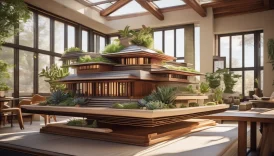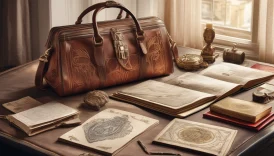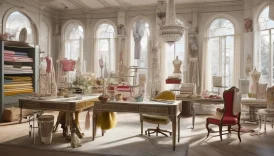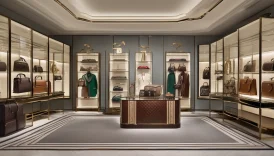The Evolution of Wedding Dresses: Who Inspired Bridal Trends?
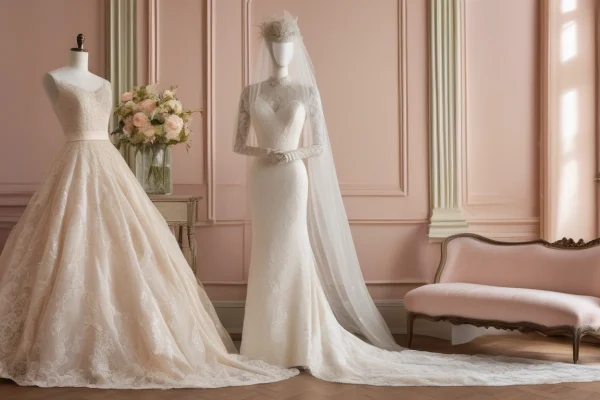
- The Evolution of Wedding Dresses: Who Inspired Bridal Trends?
- The Historical Roots of Bridal Fashion
- Iconic Influences: Royalty and Celebrities
- The Victorian Era's Impact
- Queen Victoria's Influence
- Fashion Trends of the 20th Century
- Modern Trends and Cultural Diversity
- Sustainable and Ethical Fashion Choices
- Custom and Vintage Options
- Technology's Role in Bridal Fashion
- Frequently Asked Questions
The journey of wedding dresses is like a beautiful tapestry, woven through time with threads of culture, tradition, and individual expression. From the opulent gowns of royalty to the modern, minimalist designs we see today, bridal fashion has undergone a remarkable transformation. But what sparked these changes? Who were the visionaries that shaped bridal trends? Let’s dive into the fascinating evolution of wedding attire and discover the influential figures and cultural shifts that have left an indelible mark on bridal fashion.
Historically, wedding dresses were not always white. In fact, brides wore their best dresses, regardless of color, until the Victorian era introduced the iconic white gown. This change was largely influenced by Queen Victoria, who chose a white dress for her wedding to Prince Albert in 1840. This seemingly simple choice sparked a revolution, leading brides worldwide to embrace the purity and elegance associated with white gowns. Can you imagine the surprise of brides back then, adopting a color that was once reserved for mourning?
Fast forward to the 20th century, and we see a dazzling array of styles emerge, from the flapper dresses of the 1920s to the glamorous Hollywood-inspired gowns of the 1950s. Each decade brought its own flair, often reflecting the societal shifts of the time. For instance, the 1960s introduced more relaxed silhouettes, while the 1980s were all about extravagance, with voluminous skirts and dramatic sleeves. These trends were often set by influential figures, such as movie stars and fashion icons, who inspired brides to seek out the latest styles.
Today, the landscape of wedding dresses is more diverse than ever, reflecting a blend of traditional and contemporary influences. Brides now have the freedom to choose gowns that resonate with their personal style and cultural heritage. This shift has led to a rise in sustainable and ethical fashion choices, where many brides opt for dresses made from eco-friendly materials or choose vintage options that tell a story. As we embrace this new era of bridal fashion, it’s clear that the evolution of wedding dresses is an ongoing journey, one that continues to inspire and surprise.

The Historical Roots of Bridal Fashion
Understanding the origins of wedding dresses reveals how traditions evolved over centuries, influenced by societal norms, religious practices, and royal ceremonies that set the stage for modern bridal attire. In ancient times, brides wore garments that were often reflective of their social status and cultural heritage. For instance, in ancient Rome, brides donned a flame-colored tunic called the “flammeum,” symbolizing the fire of love and the protection of the gods.
As we move through history, we see a shift in bridal fashion. The medieval period introduced the concept of a bride wearing a gown that was often richly adorned, showcasing her family’s wealth. These gowns were typically made from luxurious fabrics such as silk and velvet, embellished with intricate embroidery and jewels. The color of the dress varied widely, with red being a popular choice among brides, symbolizing fertility and passion.
It wasn’t until the Victorian era that the white wedding dress became a widespread trend. Queen Victoria’s choice to wear a white gown for her wedding to Prince Albert in 1840 marked a pivotal moment in bridal fashion. This decision sent shockwaves through society, leading to a surge in brides opting for white dresses, which came to symbolize purity and innocence. The Victorian period also introduced elaborate designs, including long trains and veils, which became staples in bridal wear.
Throughout the 20th century, bridal fashion continued to evolve, reflecting broader societal changes and cultural movements. For example, the flapper dresses of the 1920s embraced a more relaxed silhouette, while the glamorous gowns of Hollywood starlets in the 1950s brought a sense of elegance and sophistication to the bridal scene. Each of these styles contributed to the rich tapestry of wedding attire, paving the way for the diverse options available to modern brides.
Today, the historical roots of bridal fashion remind us that every dress carries a story. From the ancient traditions to the iconic influences of royalty and celebrities, each era has left its mark on what we consider the perfect wedding dress. This fascinating journey through time not only highlights the beauty of bridal fashion but also showcases the cultural significance behind every gown.

Iconic Influences: Royalty and Celebrities
The world of bridal fashion has been profoundly shaped by the glitz and glamour of royalty and celebrities. These figures not only capture the public’s imagination but also set trends that ripple through the wedding industry. When a royal wedding occurs, it’s not just a ceremony; it’s a spectacle that influences countless brides around the globe. Just think about it—how many times have you heard someone say they want a dress like the one worn by a famous bride? It’s like a modern fairy tale that inspires real-life choices.
For instance, when Kate Middleton walked down the aisle in her stunning lace gown designed by Sarah Burton for Alexander McQueen, brides everywhere took note. The intricate details and classic silhouette made waves, leading to a surge in similar styles across bridal boutiques. This moment wasn’t just about fashion; it was about a cultural shift, as many brides sought to capture that royal elegance on their special day.
Additionally, celebrity weddings often serve as a launchpad for new trends. For example, the influence of celebrities like Jennifer Aniston and Gwen Stefani has been significant. Their unique styles—ranging from simple and chic to bold and colorful—have encouraged brides to think outside the box. Today, many brides are not just opting for the traditional white dress; they are embracing a spectrum of colors and styles that reflect their personalities.
Moreover, the impact of social media cannot be overlooked. Platforms like Instagram and Pinterest allow brides to share and discover ideas instantly, creating a melting pot of styles influenced by both royal and celebrity weddings. This has led to a diverse array of choices, making it easier for brides to find a dress that resonates with their individual style while still echoing the elegance of those iconic figures.
In summary, the interplay between royalty, celebrities, and bridal fashion is a fascinating narrative that continues to evolve. As these influential figures redefine what it means to be a bride, they inspire a new generation to celebrate their unique love stories in ways that reflect both tradition and personal flair.
The Victorian Era’s Impact
The Victorian era, spanning from 1837 to 1901, was a time of remarkable change and innovation, especially in the realm of fashion. It was during this period that the concept of the white wedding dress emerged, a revolutionary idea that transformed bridal attire forever. Before Queen Victoria donned her iconic white gown in 1840, brides typically wore their best dresses, regardless of color. This shift not only symbolized purity and innocence but also reflected the growing importance of the wedding ceremony itself in society.
Queen Victoria’s choice set off a wave of imitation among brides, leading to a surge in the popularity of white gowns. This trend was more than just a fashion statement; it represented a new social standard where the bride’s attire became a focal point of the wedding. The intricate designs of the time, characterized by lace, silk, and elaborate embellishments, showcased the craftsmanship and artistry that defined the era. Brides began to seek out dresses that were not only beautiful but also conveyed their social status.
Moreover, the Victorian era introduced various styles that would influence bridal fashion for decades. Some notable elements included:
- Full Skirts: Gowns featured voluminous skirts supported by crinolines, creating a dramatic silhouette.
- Intricate Embroidery: Detailed embroidery and beading added a touch of luxury and sophistication.
- Veils and Accessories: Veils became an essential part of the bridal ensemble, often accompanied by floral crowns or tiaras.
As the Victorian era progressed, the influence of royalty continued to shape bridal fashion. The desire to emulate the elegance of royal weddings became a common aspiration among brides. This period laid the groundwork for the modern wedding dress, intertwining tradition with personal expression. The legacy of Victorian bridal fashion persists today, reminding us that every wedding dress tells a story of love, culture, and history.
Queen Victoria’s Influence
Queen Victoria’s decision to wear a white gown for her wedding to Prince Albert in 1840 was nothing short of revolutionary. Prior to this moment, brides typically wore their best dresses, regardless of color. However, Victoria’s choice not only set a new trend but also symbolized purity and a shift in societal norms surrounding marriage. This single event ignited a wave of change that transformed the wedding dress into a powerful symbol of love and commitment.
The impact of her choice reverberated through the decades, leading to a cultural phenomenon where brides aspired to emulate her style. As a result, the white wedding dress became a staple in bridal fashion, forever altering the landscape of wedding attire. Many brides began to associate the color white with the idea of innocence and purity, which was a significant departure from previous traditions.
Interestingly, the trend did not stop with just the color. The elaborate designs and embellishments that adorned these gowns drew inspiration from Victorian fashion, characterized by intricate lace, flowing fabrics, and detailed embroidery. The table below illustrates some key features of Victorian-inspired wedding dresses:
| Feature | Description |
|---|---|
| Fabric | Luxurious materials like silk, satin, and lace |
| Silhouette | Defined waist with flowing skirts, often with petticoats |
| Embellishments | Intricate embroidery and lace details |
| Veils | Long veils often accompanied the dresses, adding to the elegance |
As the years went by, Queen Victoria’s influence continued to resonate, inspiring countless designers and brides alike. Today, her legacy lives on in the modern bridal industry, where the white wedding dress remains a timeless choice for many couples. This enduring trend highlights how a single moment in history can shape cultural practices for generations, making Queen Victoria a pivotal figure in the evolution of wedding fashion.
Fashion Trends of the 20th Century
The 20th century was a vibrant tapestry of fashion evolution, and wedding dresses were no exception. As society transformed, so did the styles that brides chose to wear on their special day. Each decade brought with it a unique flair, reflecting the cultural shifts and artistic movements of the time. Can you imagine a bride walking down the aisle in a flapper dress from the 1920s? Or perhaps a stunning, glamorous gown inspired by Hollywood starlets in the 1950s? These changes not only influenced bridal fashion but also shaped the very essence of what it meant to be a bride.
In the early decades, the flapper style dominated the scene, characterized by its loose fit and intricate beading. This era encouraged women to embrace their freedom, and many brides opted for dresses that reflected this spirit. Fast forward to the 1950s, and we see the emergence of the classic A-line silhouette, often adorned with lace and satin. This style was a nod to the post-war optimism and the desire for elegance. The iconic designs of renowned fashion houses like Dior and Balenciaga played a pivotal role in shaping bridal attire during this period.
As we moved into the 1970s and 80s, the influence of bohemian styles and rock ‘n’ roll culture introduced a more relaxed approach to wedding dresses. Brides began to experiment with flowy fabrics, floral prints, and even colorful accents, breaking away from the traditional all-white gown. This era was all about personal expression, allowing brides to showcase their individuality. The 1990s saw a resurgence of minimalism, with sleek lines and understated elegance taking center stage.
In summary, the 20th century was a period of dynamic change in bridal fashion. From the flapper dresses of the 1920s to the minimalist gowns of the 1990s, each trend tells a story of its time. The evolution of wedding dresses reflects not only the changing tastes but also the cultural narratives that shaped generations of brides. As we continue to explore fashion today, it’s fascinating to see how these historical influences still resonate in modern bridal designs.
Modern Trends and Cultural Diversity
In today’s world, wedding dresses are more than just garments; they are a celebration of individuality and cultural heritage. Brides are embracing a stunning array of styles that reflect their personal stories and backgrounds. This shift towards diversity is not just a trend; it’s a movement that honors the unique identities of brides around the globe. Imagine walking down the aisle in a dress that tells your story, perhaps adorned with traditional patterns or colors that resonate with your culture!
Modern bridal fashion has become a melting pot of influences, where traditional elements meet contemporary flair. For example, many brides are opting for dresses that incorporate ethnic fabrics or traditional embroidery, showcasing their heritage while embracing modern silhouettes. This fusion of styles allows for a truly personalized experience, making each wedding dress as unique as the bride herself.
Moreover, the rise of destination weddings has further fueled this trend. Brides planning ceremonies in exotic locales often choose dresses that complement the local culture, whether it’s a flowing beach gown or a more structured gown inspired by local traditions. The globalization of fashion means that brides can now select from a variety of styles that were once confined to specific regions, giving them the freedom to express themselves in ways that were previously unimaginable.
Additionally, the influence of social media cannot be overlooked. Platforms like Instagram and Pinterest have made it easier for brides to discover and share diverse styles from around the world. This exposure has led to a newfound appreciation for cultural diversity in bridal fashion. Today, brides are not just looking for the latest trends; they are seeking dresses that resonate with their values and reflect their unique journeys.
Ultimately, the modern bride is empowered to choose a dress that not only looks beautiful but also tells a story. Whether it’s a gown inspired by traditional designs or a modern creation that breaks the mold, the emphasis on cultural diversity in wedding dresses is here to stay, making every wedding a beautiful tapestry of love and tradition.

Sustainable and Ethical Fashion Choices
In today’s world, where environmental awareness is at an all-time high, many brides are making for their wedding dresses. This shift is not just a trend; it’s a movement towards responsible consumption and a deeper connection to the planet. Imagine walking down the aisle in a gown that not only makes you feel beautiful but also reflects your values. Isn’t that a wonderful thought?
Brides are increasingly opting for dresses made from eco-friendly materials such as organic cotton, hemp, and recycled fabrics. These choices not only reduce waste but also minimize the carbon footprint associated with traditional bridal wear. Furthermore, many designers are embracing ethical production practices, ensuring that their garments are made under fair labor conditions. This way, brides can wear their dresses with pride, knowing they are supporting a more sustainable fashion industry.
Another exciting option is the rise of vintage and pre-loved wedding dresses. These gowns carry their own stories and charm, allowing brides to embrace a unique style while reducing the demand for new materials. Imagine wearing a dress that has already witnessed love and joy; it’s like wearing a piece of history. Plus, it’s a fantastic way to honor the past while making a conscious choice for the future.
To further illustrate the impact of these choices, consider the following table, which compares traditional wedding dress production with sustainable practices:
| Aspect | Traditional Production | Sustainable Production |
|---|---|---|
| Materials Used | Conventional fabrics | Eco-friendly materials |
| Labor Practices | Varies widely | Fair labor practices |
| Environmental Impact | High | Low |
Ultimately, choosing a sustainable wedding dress is about more than just fashion; it’s about making a statement. It’s about saying, “I care about the planet and the people who inhabit it.” So, as you embark on your wedding planning journey, consider how your choices can reflect your values and create a positive impact. After all, your wedding day is not just a celebration of love; it’s also a chance to showcase your commitment to a better world.
Custom and Vintage Options
In a world where individuality reigns supreme, custom and vintage wedding dresses have become the go-to options for many brides seeking to make a statement on their special day. Imagine walking down the aisle in a gown that not only reflects your personal style but also tells a story—be it from your family’s past or a unique design that you’ve crafted just for you.
Custom wedding dresses allow brides to collaborate with designers, ensuring that every detail is tailored to their vision. This process is like painting a masterpiece; you choose the fabric, the cut, and the embellishments, creating a gown that is truly one-of-a-kind. Plus, the experience of having a dress made just for you can be incredibly rewarding, adding a personal touch to your wedding journey.
On the other hand, vintage wedding dresses bring a sense of nostalgia and history to the occasion. These gowns often come with their own tales, having been worn by brides from different eras. Whether it’s a delicate lace gown from the 1920s or a bohemian-inspired dress from the 1970s, vintage options can add a charming twist to your wedding ensemble. Many brides appreciate the craftsmanship and unique details found in vintage dresses, which often stand in stark contrast to mass-produced modern gowns.
Here are a few reasons why brides are drawn to custom and vintage options:
- Uniqueness: Stand out with a dress that no one else has.
- Sentimental Value: Vintage dresses can carry family history and emotional significance.
- Quality Craftsmanship: Many vintage gowns showcase exquisite details and materials that are hard to find today.
Ultimately, whether you opt for a custom creation or a vintage find, these choices allow you to embrace your style while honoring traditions. The journey of selecting the perfect dress becomes not just a task, but a cherished memory that adds to the joy of your wedding day.
Technology’s Role in Bridal Fashion
In today’s fast-paced world, technology has woven itself into the very fabric of bridal fashion, transforming how brides choose and purchase their wedding dresses. Gone are the days when you had to rely solely on local boutiques or word-of-mouth recommendations. Now, with just a few clicks, brides can explore a universe of styles, fabrics, and designers from the comfort of their own homes. It’s like having a personal stylist at your fingertips!
One of the most exciting advancements is the rise of online shopping platforms. These websites offer a stunning array of options, allowing brides to filter by style, price, and even fabric. Imagine sifting through thousands of gowns without ever stepping foot outside! This convenience not only saves time but also opens up a world of possibilities that might not be available locally.
Moreover, virtual fitting technology has revolutionized the way brides find their perfect dress. With augmented reality (AR) and 3D modeling, brides can try on dresses virtually, ensuring they get a feel for the gown before making a purchase. This technology helps to eliminate the guesswork and reduces the chances of disappointment when the dress arrives. It’s like having a fitting room in your living room!
Additionally, social media platforms like Instagram and Pinterest have become essential tools for inspiration and trend discovery. Brides can follow their favorite designers, browse real wedding photos, and even connect with other brides-to-be to share experiences. This interconnectedness fosters a sense of community and creativity that was once unimaginable.
As technology continues to evolve, we can expect even more exciting innovations in bridal fashion. The integration of sustainable practices through tech, like 3D printing and eco-friendly materials, is also on the rise, allowing brides to make ethical choices without sacrificing style. The future of bridal fashion is not only about finding the perfect dress but also about embracing a more responsible and personalized approach to wedding attire.
Frequently Asked Questions
- What is the significance of the white wedding dress?
The white wedding dress symbolizes purity and has become a traditional choice for brides since Queen Victoria wore one in 1840. This pivotal moment influenced generations, making white synonymous with bridal elegance.
- How have royal weddings influenced bridal fashion?
Royal weddings have a massive impact on bridal trends, often setting new standards for style and elegance. Brides worldwide look to these ceremonies for inspiration, wanting to emulate the glamour of their favorite royals.
- What are some modern trends in wedding dresses?
Today’s wedding dresses reflect a mix of traditional and contemporary styles, showcasing cultural diversity. Brides can choose designs that resonate with their heritage and personal style, making each dress uniquely theirs.
- Why are sustainable wedding dresses becoming popular?
As awareness of environmental issues grows, many brides are opting for sustainable and ethically made dresses. This shift reflects a desire for responsible consumption and a preference for unique, meaningful garments.
- How has technology changed the way brides shop for wedding dresses?
Technology has revolutionized bridal fashion by offering online shopping experiences and virtual fittings. This makes it easier for brides to find the perfect gown that fits their vision and body, all from the comfort of their home.
